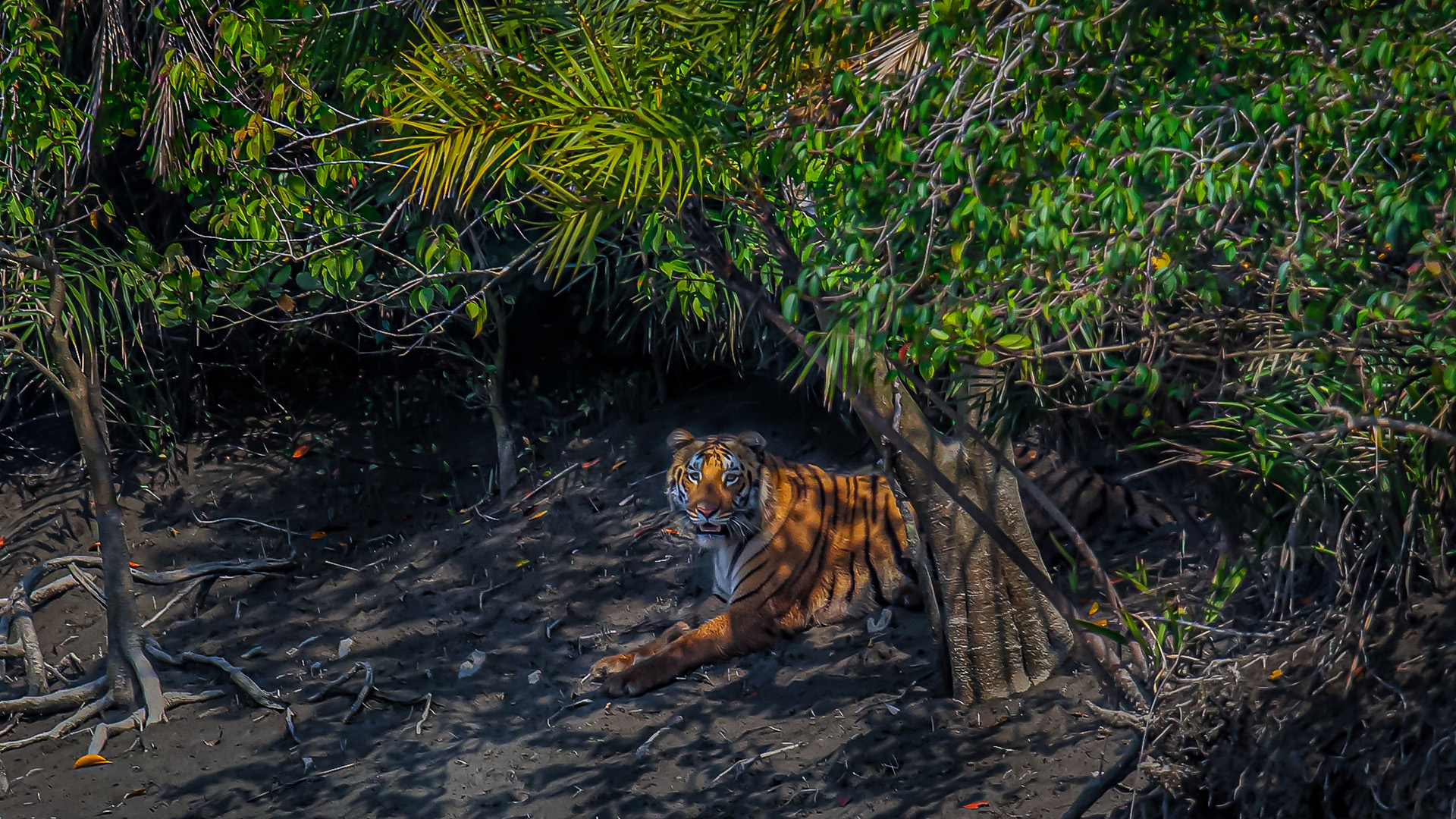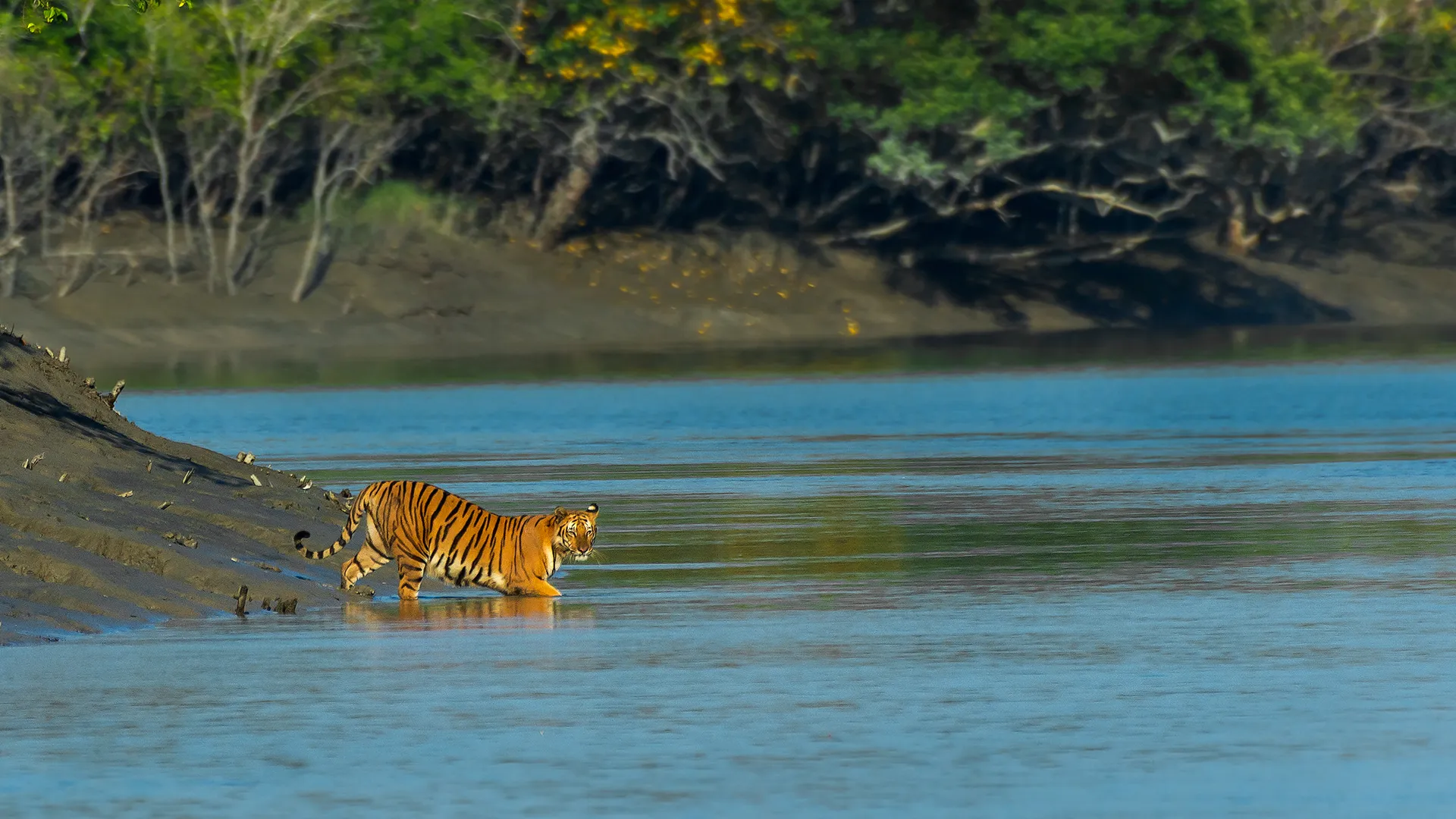
Sundarban Tiger Reserve
Sundarban Tiger Reserve is a home to the beautifull “The Royal Bengal Tigers”, who are well adapted to unique environment of the National Park. Sundarbans has been formed with the confluence of the three rivers, “the Ganga, the Brahmaputra and the Meghna”. This is said to be the largest Delta in the world. The Sundarban National Park is spread across two countries; India and Bangladesh. Sundarban National Park covers the estimated area of about 4110 sq km, out of which approximately 41% of the area is covered by the waterbodies. Sundarban boat Safari is thrilling and unique experience in itself.
SUNDARBAN: The Mystery Mangroves Yes “Sundarban” is the mystery until witnessed and experienced this diversified mangrove forest. Sundarban is said to be one of the largest and dense mangrove forests in India. The wide array of trees, mudflats, and the wild flora and fauna, along with various species of aquatic fauna inhabit in the salty water of this beautiful mangrove forest. The lush green forest of Sundarban National Park houses island and Villages along with the rivers. Boat safari is the only way to explore this beautiful mangrove forest of Sundarban. Explore new life into your wildlife journeys by adding Sundarbans into your wildlife travel itinerary. Capture the beauty of pristine forest of Mangroves in your camera and make it a life time memorable trip to Sundarban National Park.
Rivers: Sundarbans has been formed with the confluence of the three rivers, “the Ganga, the Brahmaputra and the Meghna”.
Islands: There are a number of islands in this region, and some of them allures the tourists. The most famous of them are Kalash, Henry and Netidhopani islands in the periphery of Sundarban National Park.
Villages: Few villages are close to Sundarbans National Park like Pakhiralay, Dayapur, Bali and Sajnekhali. Village walks are preferred by the tourists, as it offers the sight of traditional lifestyle of the villagers.
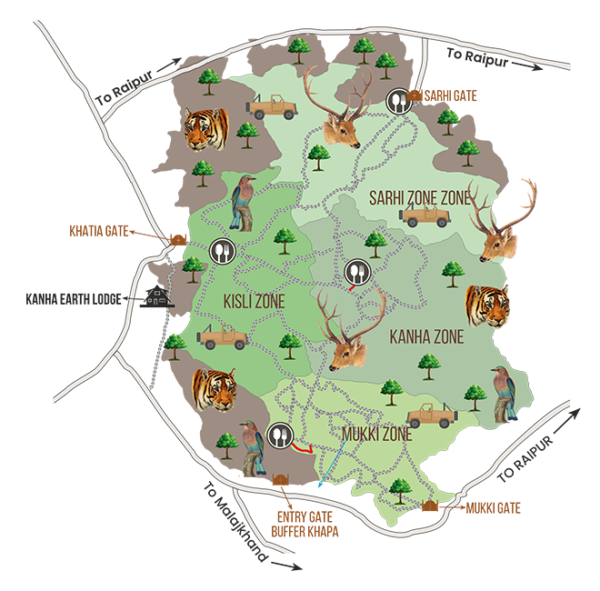
Sundarban National Park, a low-lying islands is situated in the coastal districts of South 24-Parganas and a small portion of North 24-Parganas (Arbesi Block) in West Bengal, spreaded between India and Bangladesh. Sundarban, the name has been derived from a very famous tree “Sundari”, the mangrove known for its various species and are found in high density. Sundarbans has been formed with the confluence of the three rivers, “the Ganga, the Brahmaputra and the Meghna, this is known as the largest delta in the world. Sundarban is spread over an area of 10,000 Sq Kms, and has 102 islands, out of which 52 Island are occupied for Human Population and in the remaining Islands wildlife inhabits in their natural habitat. 70 percent of Island is now under the territory of Bangladesh, whereas 30 percent of Island lies under the periphery of India. Sundarban National Park was declared a World Heritage Site by UNESCO in 1997.
The Sundarban National Park in India has been prioritized by WWF- India since the year 1973, due to its inimitable biodiversity. In the year 2007, a dedicated Sundarban programme was established by WWF to address the issues of climate change and conservation. WWF- India’s dream for this beautiful and unique landscape is to develop a climate resistant Sundarbans that supports biodiversity, ecosystems services and environmental growth.
Sundarban National Park is bestowed with glorious picturesque beauty and abundant natural resources. This forest has been recognized globally for high biodiversity of mangrove, the flora and Fauna both on land and water.
Flora
Sundarban, the name has been derived from a very famous tree “Sundari”, the mangrove has 64 variety of species and can resist different weather conditions and saline blizzards brought in by the tides. In the month of April and May the red blooms of genwa (Excoecaria agallocha) the crab-like red flowers of the kankra (Bruguiera gymnorrhiza) and the yellow flowers of khalsi (Aegiceras corniculatum) makes the forest beautiful and its spectacular view pleases the tourists. Some of the other commonly found plants and trees species in the Sundarban park are dhundal (or cannonball mangrove, Xylocarpus granatum), passur (Xylocarpus mekongensis), garjan (Rhizophora spp.), sundari (Heritiera fomes) and goran (Ceriops decandra).
It is anticipated that there are about 78 species of mangroves in these forests. The northern periphery of Sundarbans is protected by foreshore Dhani grass (Oryza coarctata). The southern and eastern parts of Sundarban has the species of Kankra, Garjan (Rhizophora spp.), and thick covers of Sundari trees.
“Algal Flora of Sundarbans Mangals” a book written by Neera Sen, Kumudranjan Naskar describes the serene beauty of Flora of Sundarban National Park.
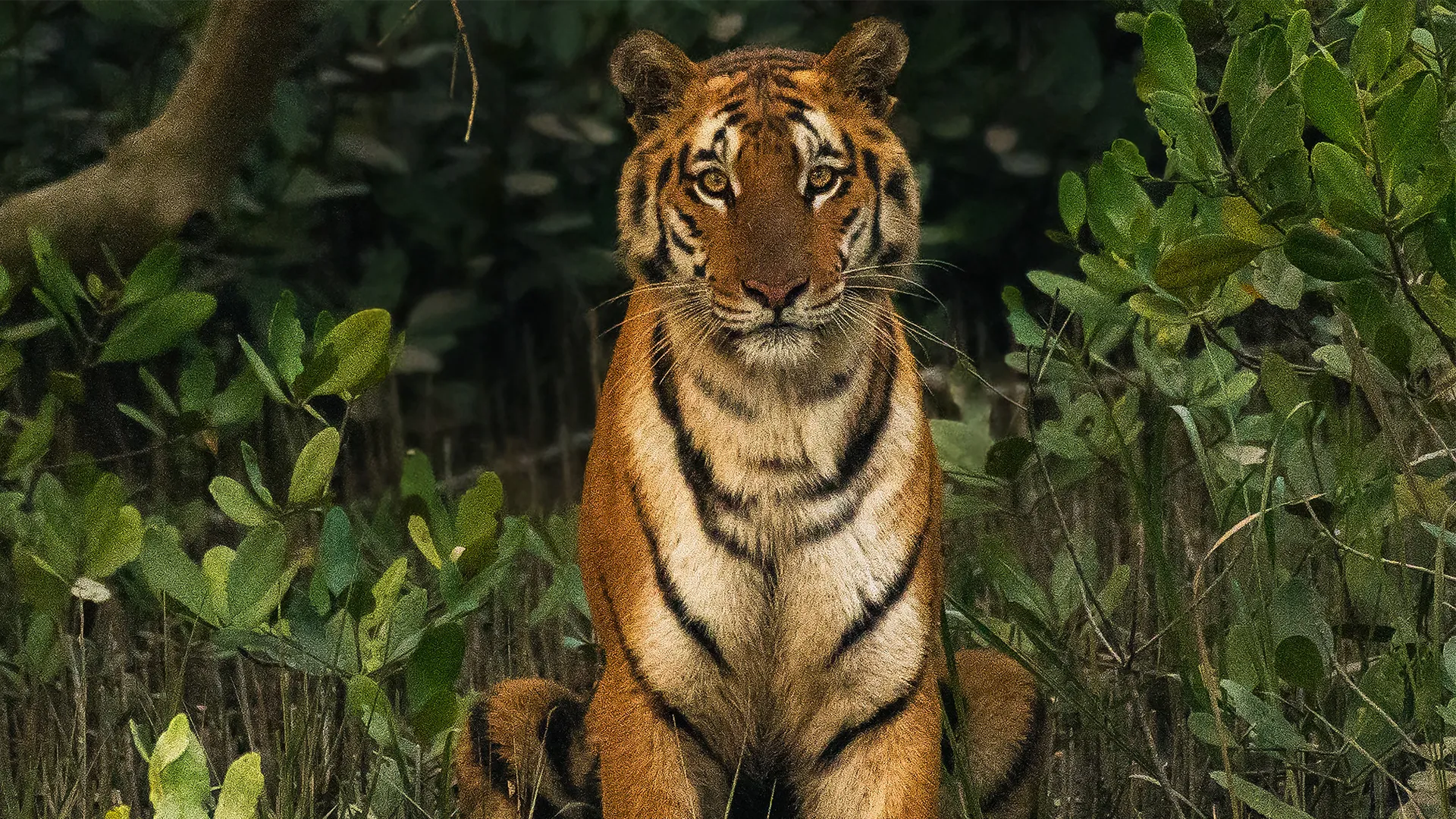
Fauna
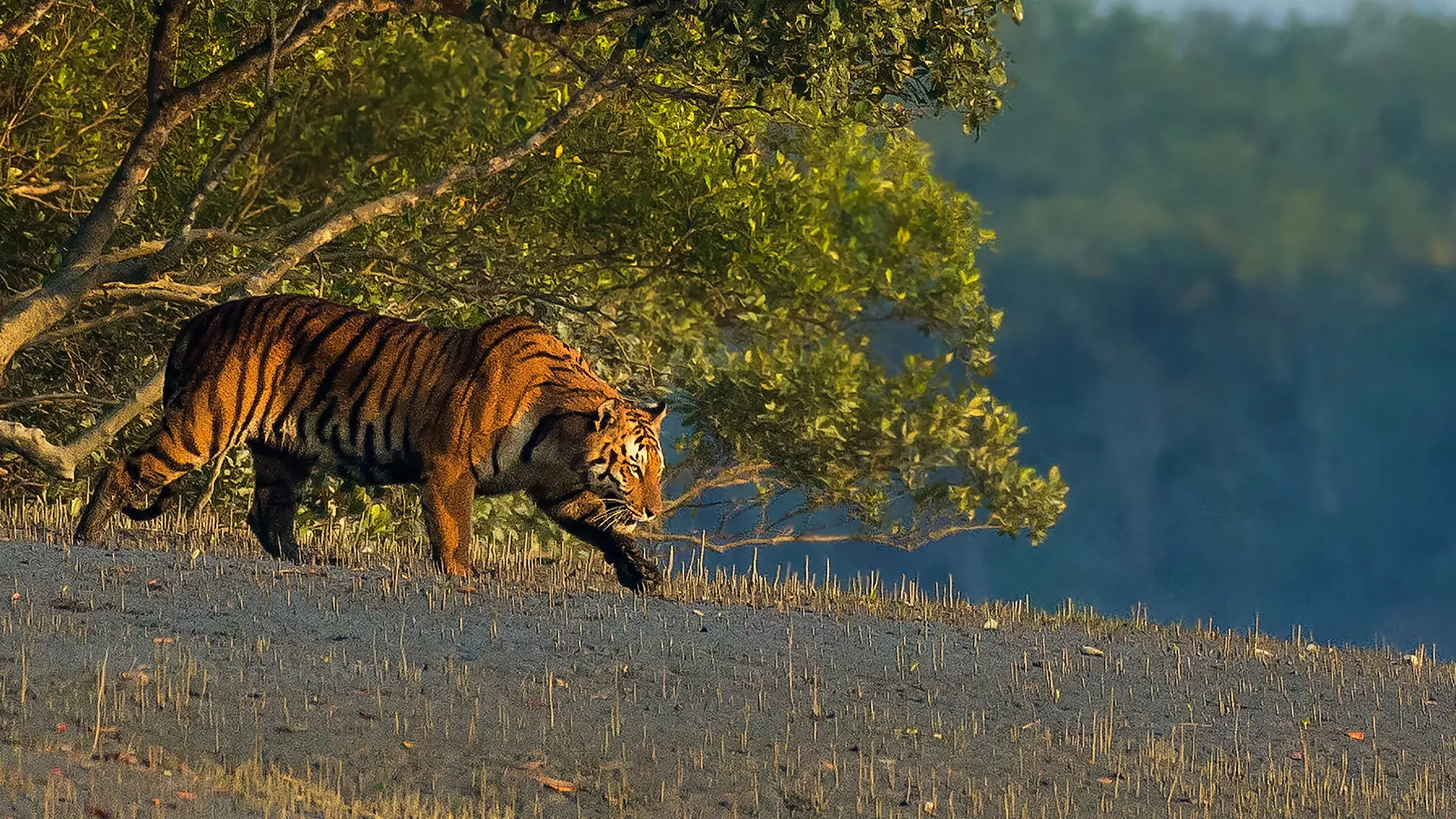
“Wildlife tourism”, the first thing comes in mind is the sightings of the wild beast in their natural habitat. The Sundarbans forest is home to Royal Bengal Tigers in India. The Tigers in Sundarban have a distinctive characteristic of swimming in saline water. These Royal Bengal Tigers can be seen on the river banks sunbathing during winters and swimming during summers.
The other species found in Sunderban are fishing cats, macaques, leopard cats, Indian grey mongoose, wild boar, flying fox, pangolin, and Indian grey mongoose. The chital deer and rhesus monkey are commonly sighted. Sunderban National Park is very rich in its Fauna.
Sunderbans boat safari is undoubtedly the most adventurous and exceptional forest safari in India. The thick mangrove forest of the Sunderbans gets divided into the various delta region by the numerous river channels which make the forest a truly wild. Sundarban National park is home to “Royal Bengal Tigers”. For the tiger safari in Sundarban forest, Boat safari is the only option to enter to the mangroves. Tourists get the opportunity to witness the dense forest, linked by many free-flowing rivers like Matla and Bidyadhari. AC boats and Non AC boats are available for boat safari in Sundarban. The boats are of different sizes, Large ones for longer duration of safari and smaller ones for shorter duration of safari. A boat booking in sundarban can be done for a period of a week also.
For the tourism purpose or for safari, Boats have to be registered with tourism department of west Bengal, then only they are allowed to enter to the forest. The boats for saundarban safari are available in different sizes. Small boat can accommodate 4 tourists and bigger boast can accommodate a group of forty tourists. There are comfortable seating chairs, bed, washrooms and well equipped kitchen is available on the boat for boat safari in Sundarban.
Tourists have the option of stay on boat in Sundarban during safari, the experience of staying overnight on boat is thrilling and gives the chance to witness the wild flora and fauna of the Sundarban forest and makes the trip memorable.
Boat Safari timings in Sunderban National Park:
Tourists can only enjoy the boat safaris in Sunderbans National Park. Sundarban National Park remains open through out the year. Full day safari timings in Sundarban National park are from 8:30 AM till 4:00 PM in the evening. The entry of boats in the reserve is prohibited after 6:30 PM.
Do’s during boat safari tour to Sunadraban National Park
- Avoid drinking tap water and prefer filtered water or coconut water during safari trip to sundarban.
- Do not carry mineral water unless it is part of your medication as Sundarbans National Park is a “No Plastic Zone”.
- Carry some light snacks (like fruits, nuts, etc.) to munch on while on Sundarban safari trip.
- Carry sunglass, hat, and sunscreen lotion, will be needed during the day.
- Preferably carry cash as the possibility of accessing ATMs is remote. Only ATM, maintained by SBI, is available at Gosaba and may run short of cash being upcountry location.
- Carry common medicines for fever, cough, cold, etc as it may not be available during Boat safaris in Sundarban.
- Most importantly, carry flashlight with spare batteries to experience the wilderness at night during Boat safaris in Sundarban.
- Carry spare rechargeable batteries and / or Power banks for your camera, phone, and other electronic items as you might not get a chance to recharge the batteries.
Don’ts during boat safari tour to Sunadraban National Park
- Do not carry any polythene bag as Sunderbans National Park is a “No Plastic Zone”.
- Do not throw overboard any trash while on the boat and/or cruise for Sundarban safari trip.
- Do not play loud music or make any such noise which could disturb wildlife.
- A thumb-rule to adhere for safety is that no one should disembark the boat unless as directed by the guide or operator.
- Staying within the Sunderbans National Park/Tiger reserve area is permitted only from Sunrise to Sunset for safari tour to Sundarban.
- Hunting, fishing, damaging flora & fauna in core area, and movement within non-permitted forest areas is a serious offence and is not permissible during boat safari trip to Sudarban.
Types of Jungle Safari in Sundarban Tiger Reserve
Boat Safari
- Description: The Sundarban is a vast delta of mangroves, making boat safaris the most common and popular way to explore the region. These safaris take visitors through the winding creeks and rivers, offering a chance to spot the elusive Royal Bengal Tigers, saltwater crocodiles, spotted deer, and various species of birds.
- Highlights: Mangrove forests, wildlife sightings (tiger, crocodile, otters), bird watching, and exploring remote islands.
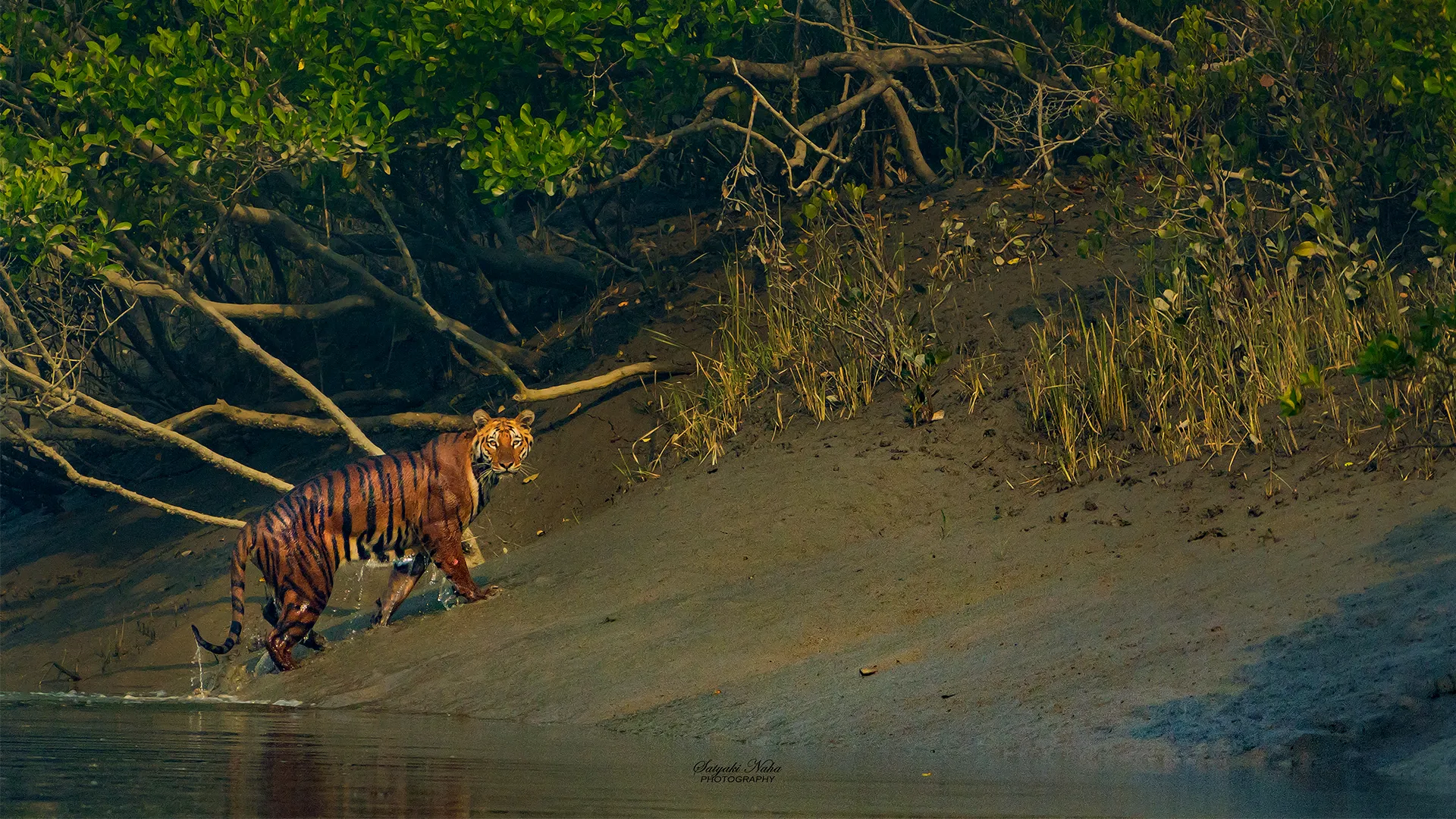
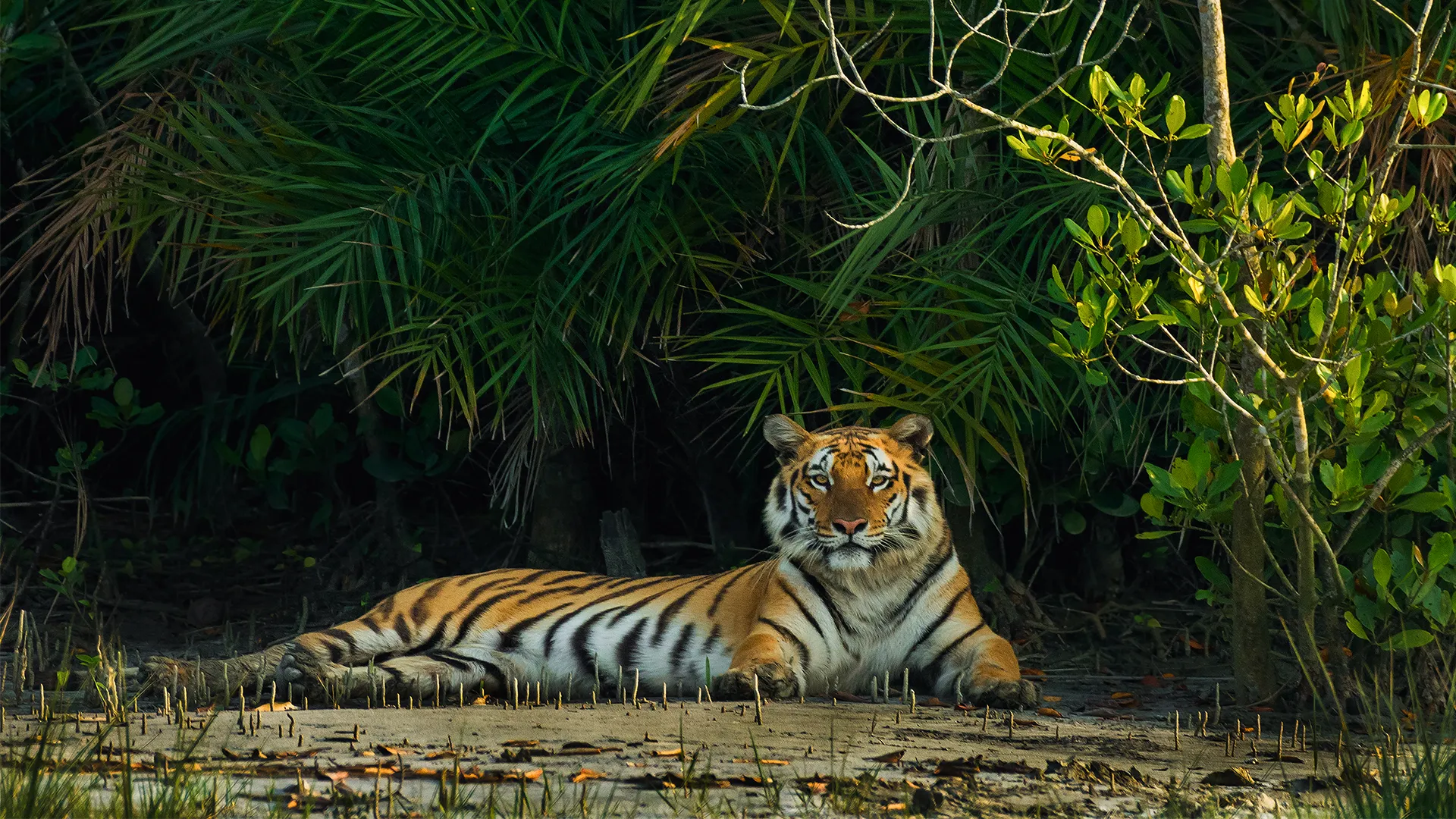
Day Safari
- Description: Day safaris typically start early in the morning and last until late afternoon. These boat tours cover several important areas in the reserve, including Sajnekhali Watchtower, Dobanki Watchtower, and Sudhanyakhali Watchtower, where visitors can spot wildlife.
- Highlights: Wildlife viewing during daylight, visits to watchtowers, and short treks on some islands.
Sundarban National Park, an Indian territory of Sundarbans forest, is situated in West Bengal, in the state of India. Kolkata is the nearest city to Sundarban National Park and is very well connected by roadways, waterways and railways. Kolkata being the capital city of West Bengal is very well connected to all the major cities of the country and is accessible by all means of transport. Kolkata is also connected with all the major cities of the world either by direct flight or connecting flights.
By Air:
Netaji Subhas Chandra Bose International Airport, located in Kolkata is the closest airport from the Sundarban National Park. The distance from airport to National park is 120 km from the departing point of the Sundarbans safari at Godkhali Port. Taxi or cab services are available to reach the Godkhali from Kolkata airport and takes around 3 Hours to reach Sundarban.
By Train:
Sealdah Railway Station is one of the major junction of west Bengal and has the connectivity of regular trains from many cities across the country and is located on the main route of north east railways. Kolkata is another option for rail route. The local trail facility is available at Sealdah junction to reach to Canning railways station in around one and half hours time. Public transport or private taxi or cab services are available from Canning to reach to the entry point of Sundarbans at Godkhali to board the boat for the safari in Sundarban National Park.
By Road:
Tourists can travel by road through a public transport or private cars, taxi or cab services. The road distance from Kolkata to Godkhali is 120 Kms and from Canning to Godkhali is 64 Kms respectively. Board the boat at Godkhali for the boat safari trip to Sundarban National Park.
Distance between major cities and Sundarban Tiger Reserve
- Distance from Kolkata to Sundarbans is around 102 kms
- Distance from Bangalore to Sundarbans distance is around 1972 kms
- Distance from Siliguri to Sundarbans is around 681 kms
- Distance from Bhubaneswar to Sundarbans is around 533 kms
- Distance from Ranchi to Sundarbans is around 484 kms
- Distance from Jamshedpur to Sundarbans is around 384 kms
- Distance from Mumbai to Sundarbans is around 2051 kms
- Distance from Hyderabad to Sundarbans is around 1550 kms
- Distance from Delhi to Sundarbans is around 1562 kms
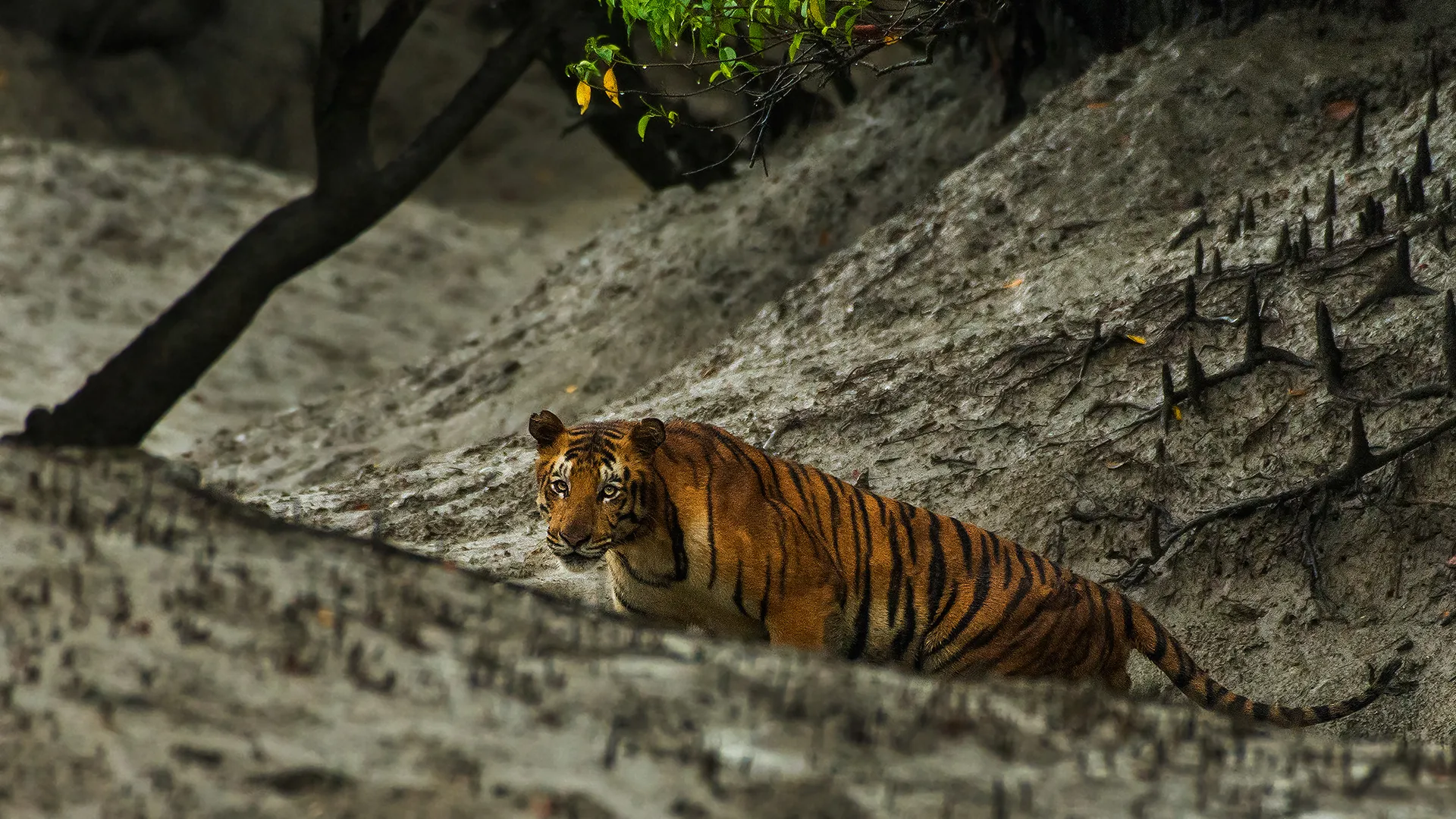
Visiting Sundarban during Summer: The weather conditions during April to June in Sundarban is hot and humid, and is uncomfortable for the tourists. The temperature ranges between 30 to 42 degree Celsius during summers in Sundarban.
Visiting Sundarbans During Summer: From April to June, the weather is hot and humid in Sundarban National Park. The temperature ranges from 30 to 42 degrees Celsius with hot waves. The hot weather is very uncomfortable for tourists, thus it is not an ideal time to visit Sundarbans. The sightings of the wild also reduces as, they are under the shades of the trees and are camouflage.
Visiting Sundarbans During Monsoon : Monsoons starts from July to September and are laden with heavy rainfall in Sundarban forest, much awaited rainfall relieves the mangrove forest and its wild flora and Fauna after the scorching summers. Temperature ranges from 25 to 35 degree Celsius makes the weather pleasant. Rivers are overflowing due to excessive rainfall and are the only mode of transport for Sundarban safari. The safari trip to Sundarban becomes risky during monsoon, hence is not an ideal time to visit the national park.
Visiting Sundarbans During Winter (October to March): Winters are the best time to visit Sundarban National Park. Between October to march, weather is pleasant and the moderate temperature ranges from 10 to 30 degree Celsius. Chances of sightings of the wild are high during winters. Birdwatchers can enjoy the migratory visitors to the park. The sundarban forest and its flora and fauna are at its best during winter. This is an ideal time to visit the Sundarban National Park.
Places to visit in and around Sundarbans National Park:
The Sundarbans National Park, an unbeatable kingdom of “The Royal Bengal Tigers”, is one of the fascinated travel destinations in the eastern region of India, especially for the wildlife and nature lovers. Below are the places to visit in Sundarban National park during your visit to Sundarban.
Sajnekhali Bird Sanctuary in Sundarban:
The Sajnekhali Bird Sanctuary is the only place in Sundarban forest that allows to take a walk in the forest. The bird sanctuary is situated on a land amid the Peechkali and Gomati Rivers. Sajnekhali bird sanctuary is the home to a numerous bird species like herons, egrets, Kingfisher, Sandpipers, Plovers, Whimbrels, Sea Eagle, Curfews and others. Another place to see inside the sanctuary is Mangrove interpretation centre.
Sajnekhali Watch Tower in Sundarban National Park:
Sajnekhali Watch Tower in Sundarban is one of the most famous watch tower, being closely located from the resorts in Sundarban. This is also the head office of forest department and is the place to obtain safari permission for Sundarban National Park. There is crocodile park, a museum and the Bonobibi temple inside the premises of the watch tower.
Sudhanyakhali Watch Tower in Sundarban National Park:
Sudhanyakhali Watch tower is in the Sundarban tiger reserve area and is strategically placed at the center of the reserve. There is a small pond behind watch tower, wherein the animals come to drink water and the chances of Tiger and other wild sightings increases. Other than the Tigers, the sightings of other wildlife species such as crocodiles, wild boars and axis deer are high in this part of Sundarban forest. This watch tower can accommodate around 25 tourists at a time.
Netidhopani Watch Tower in Sundarban National Park:
This watch tower is related to the well-known tale of Lakhindari and Behula. This watch tower can accommodate 20 people at a time and a sweet water lake is in close proximity from here, which ensures the sight of flora and fauna of Sundarban National Park.
Along with the Sajnekhali and Sudhanyakhali watch towers, there are other watch towers such as Haldi , Do Ban Ki Watch Tower and others from where tourists can get the breathtaking view of the Royal Bengal Tigers.
Bhagbatpur Crocodile Project in Sundarban National Park:
Bhagbatpur Crocodile Project is a crocodile breeding farm located in the Bhagbatpur part of the Sundarbans. This is called as the hatchery of the estuarine crocodile , the largest crocodile in the world. Bhagbatpur Crocodile Project area can be reached comfortably from the Namkhanaand.
Piyali Island: Piyali Island is situated in the Sundarban and is the doorway to the mangrove forest Sundarban National Park. The Piyali river flows amidst the island to congregate Matla river. Boat rides can be taken to enjoy the serene beauty of the place.
Lothian Island Wildlife Sanctuary: The Lothian Island Wildlife Sanctuary is situated on a 38 sq km small island and is easily accessible from Namkhana. The island is home to many bird species such as Black-Capped Kingfisher, Curlew, White-Bellied Sea-Eagle, Tern and Whimbrel. There are no Tigers on this Island, hence tourists enjoy the nature walk and bird watching in this place. The other mammals on this island are wild boar, fishing cat, spotted deer, jackal, crocodile, genetic dolphin and plenty of poisons and non-poisonous snakes. The mesmerizing view of sunset delights the tourists. This is a must visit place during trip to Sundarban National park.
Chulkati & Dhulivasani: This is one of the favorite place of tourists and a stopover during boat safari in Sundarban There are various rivers intersecting an area of around 462 sq km, and the unique flora and fauna offers an astonishing sight of nature to the tourists. The woodland of Chulkati and Dhulivasani is situated adjoining to the Kalas island.
Hiran Point: The Hiran point is located at the southern boundary of the Sundarban National park and is surrounded by picturesque water bodies from three sides, offers the panoramic view of Sundarban forest.
Haliday Island: There is large population of barking deers in this part of Sundarban forest. The Halliday Island is situated on the bank on Matla river towards southern side of the Sundarban forest and is famous tourist spot during boat safari in Sundarban National Park.
Haliday Island Wildlife Sanctuary: This wildlife sanctuary is situated on the Haliday Island, the Haliday Wildlife Sanctuary is amongst the three Wildlife Sanctuaries, which enhances the biodiversity of Sundarbans Reserve. this is spread over an area of 6 Sq Kms.
Tin Kona Island in Sundarban National Park: Tin kona Island is very famous and must visit place during the Sundarban safari trip. The sightings of the Wild is high in this part of the region.
Kanak: The crystal clear waters and shores in Kanak are considered amongst the preferred relaxing spot for Olive Ridley Turtles.




